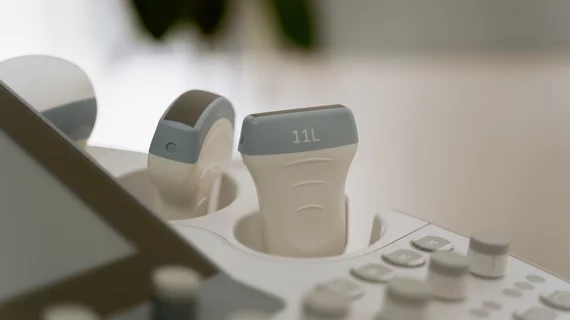Many providers believe POCUS improves care, but some still see it as 'too complex' to incorporate
New survey results offer updated insight into the use of ultrasound from a practitioner’s standpoint—from its utility and value to its ease of use and implementation, the report offers a thorough evaluation of where the modality is and where it could soon be going.
Nearly 700 physicians across multiple specialties completed the survey, conducted by Clarius for their State of Ultrasound 2023 report. With ultrasound use expected weather significant growth over the next decade, the report is intended to provide a better understanding of exactly how that growth will occur, in addition to identifying potential barriers that could inhibit the modality’s advancement.
Here are some of the key findings from the new report:
- 85% of physicians agree that ultrasound improves patient care
- 87% plan on adding ultrasound to their clinical practice as a way to expand their service offerings, which the data indicate is a top driver of implementing the modality
- 86% of those surveyed currently have ultrasound in their practice
- 89% believe that all medical professionals should be trained on ultrasound
Ohad Arazi, President and CEO at Clarius commented on the new report, noting the “clear” trends indicating a future of continued growth for the modality.
“The fact that 86% of respondents already have access to ultrasound and yet 87% say they are considering a purchase in the next year is a clear indication that clinicians who are using ultrasound today believe there’s enough value to continue to invest in upgrading legacy systems or expanding access with additional systems,” Arazi said in a prepared statement.
As for the small percentage of respondents who did not indicate intentions to purchase an ultrasound system for their practice, a lack of training could be to blame, according to the data. The report suggests that some providers have misconceptions on ultrasound costs and implementation, while others already have referral processes in place. Not having extra time to train on ultrasound and the opinion that the modality is “too complex” were also reported as factors inhibiting adoption of the modality.
Arazi suggests that in addition to this lack of training, misconceptions relative to costs, portability and workflow optimization also are obstacles that must be overcome before ultrasound can be widely introduced at the point of care.
To view the full report, click here.

